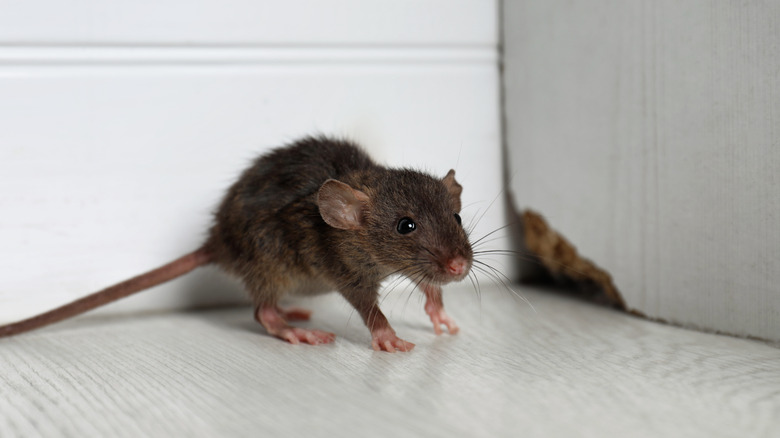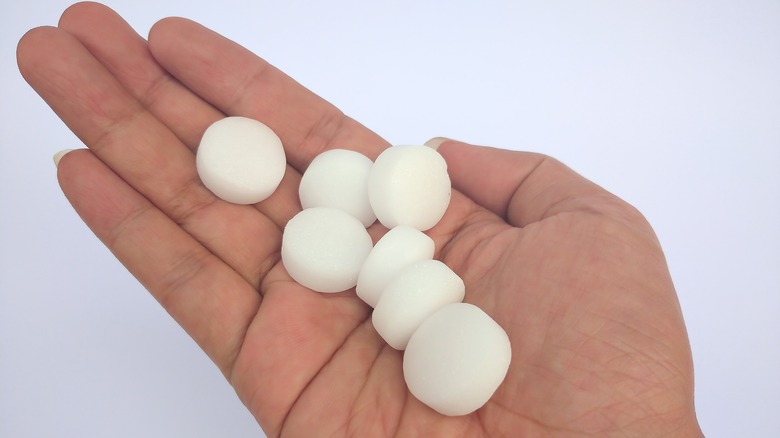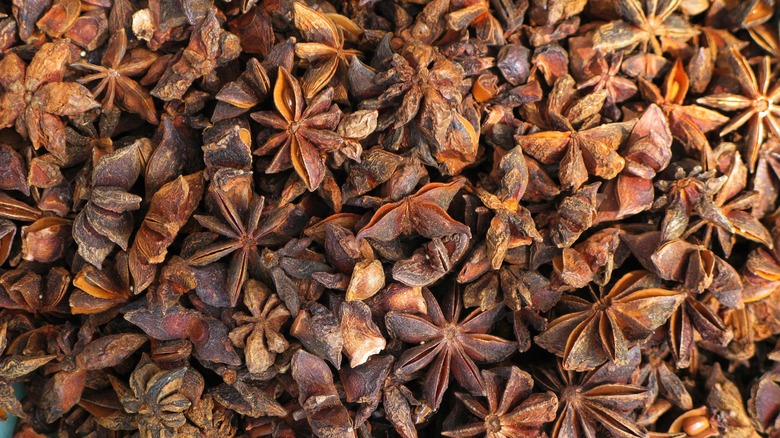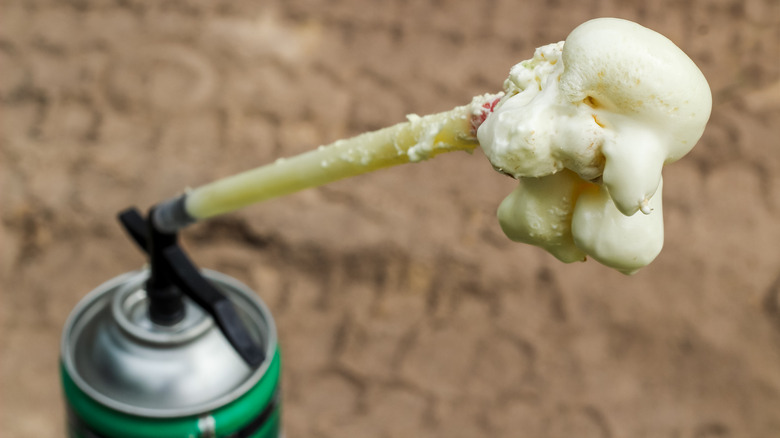Never Worry About Mice Again With These Secret Weapon Hacks
Your home is your sanctuary. The last thing you want to find when you attempt to cook dinner, do some casual cleaning, or relax on the sofa for the evening is a mouse wandering around in your domain. Mice bring more into a home than squeaks and droppings; they can transport fleas and ticks plus spread diseases like hantavirus, leptospirosis, and lymphocytic choriomeningitis, according to WebMD. Like any pest infestation, a mouse infestation is much easier to prevent than it is to eradicate.
Fortunately, there are quite a few easy hacks you can choose from to discourage mice from hanging out in your home — and many of them feature items and ingredients already in your pantry, garage, or attic. If the idea of watching a mouse run across your floor makes you want to scream in terror, check out these options for repelling the little fuzzballs and sending them on their merry way to the next house on their radar.
Essential oils don't smell good to mice
Certain essential oils with particularly strong or abrasive scents — such as peppermint, eucalyptus, and citronella oil — are known for banishing pests like flies, spiders, and roaches your house. The same applies to mice, who have notoriously sensitive respiratory systems. Once a mouse is affronted by the scent of the oil, your home starts to feel like a much less ideal hangout. If all goes to plan, they will turn around and exit as quickly as they entered.
If you'd like to put essential oils to work for rodent prevention in your home, grab some rubbing alcohol. Mix a couple of teaspoons of essential oil(s) with about a cup of rubbing alcohol in a spray bottle and spray the mixture around any areas where you've seen mice or where rodents would be most likely to enter. Alternatively, you can soak cotton balls in pure essential oils and place the balls around your home. Either way, you'll need to reapply the solution every week. However, many essential oils — including peppermint, eucalyptus, and citronella — are toxic to cats and dogs, so this isn't the best method for pet owners.
Cayenne pepper can be irritating
When it comes to repelling rodents, cayenne pepper works in a way very similar to essential oils. The pepper's spicy scent is overpowering for a small mouse and can cause irritation in their eyes and nose. Capsaicin — the element that gives cayenne pepper its spiciness — can even cause skin and respiratory tract irritation in both rodents and humans. If you've ever wiped your eye after chopping a spicy pepper, you know exactly what capsaicin irritation feels like.
To prevent mice from moving into your home, you can simply sprinkle some cayenne pepper around exterior doorways or suspected points of entry for rodents. Or, mix a generous sprinkle of cayenne pepper into a spray bottle of water and spray the entire perimeter of your home. While you're at it, sprinkle cayenne pepper in your garden to keep pests out. Because of the intense discomfort and irritation capsaicin can cause, this is not a method recommended for a home with pets or small children.
White vinegar is a safe option
Another way to use mice's sharp sense of smell against them is to embrace white vinegar as a repellent. The acetic acid in vinegar is responsible for its overwhelmingly corrosive scent. As long as you and your household can stomach the smell yourselves, it can provide you the opportunity to send mice scrambling in a way that is non-toxic, accessible, and very inexpensive. In fact, it's probably already in your cabinet or pantry. If not, you can grab a bottle at almost any grocery store.
You can use white vinegar to repel mice in nearly the same way you would use essential oils. Biotech Termite and Pest Control recommends that you dilute the vinegar with an equal amount of water and spray it around entryways and perimeters, or apply it undiluted to cotton balls and place the balls in corners and near cracks or crevices. Unlike essential oils and cayenne pepper, white vinegar is safe for supervised use around pets and children, making it an ideal solution for parents, pet owners, and those committed to getting rid of mice humanely.
Lawn maintenance removes hiding spots
While they may take refuge indoors when they have the opportunity, mice are wildlife. They love to nest in cozy, undisturbed collections of brush or debris — like firewood, leaf, or compost piles — and hide under tall grass. Removing these rodent amenities from your lawn is one of the best ways to minimize their chance of finding their way inside your home. Start by simply removing debris and keeping your grass as short as you can without compromising its health.
Pay especially close attention to the grass or landscaping near or against the exterior of your home. When grass, bushes, or flowers grow up against your home's exterior, they can block your view of any gaps or cracks that might be allowing mice to enter the house without detection. Keep any lawns or flower beds that border your house trimmed, weeded, and/or pruned to keep mice from feeling safe enough to move into your space.
Mothballs should be used with caution
If you've ever had the unfortunate experience of smelling the unpleasant scent of mothballs, you already have a good idea of why they might work to repel mice. Mothballs are intended to repel (and kill) pests that feed on stored clothing and linens in your closet. They are soaked with a pesticide known as naphthalene. Naphthalene is a byproduct found in automobile exhaust and the smoke from cigarettes and wildfires. According to the Environmental Protection Agency, animals can suffer damage to their eyes and respiratory systems when inhaling naphthalene in large quantities.
Unfortunately, the quantity of moth balls required to effectively deter mice will also pose a potential hazard to pets, small children, and even sensitive adults. Naphthalene poisoning in humans can cause symptoms like diarrhea, vomiting, headaches, dizziness, fever, painful urination and — according to the National Pesticide Information Center — the breakdown of red blood cells (known as hemolytic anemia). While there are balls similar to mothballs sold specifically for rodent prevention on the market, they are typically soaked with peppermint oil — not pesticides. If you happen to have a bag of mothballs around and don't mind the risks, they may certainly keep the mice away.
You can craft your own spice sachets
Similarly to essential oils and cayenne pepper, strong-smelling dried spices like cinnamon, chili flakes, and cloves can keep mice at bay. These spices are used to make boldly flavored foods like pickled vegetables, heavily spiced beverages, and hot sauce for a reason — they each offer a unique and especially pungent taste and smell. While this might bode wonderfully in the areas of cooking and mixology, it does not at all appeal to small, sensitive-nosed mice.
You can use these spices to make your own non-toxic DIY mice repellent sachets. If you prefer the scent of one or two spices over the others, select the ones that you enjoy. If you have an aversion to one or more, by all means, skip them. If you are neutral on the topic of spice preferences and desperate to deter mice from your home, use them all. Just place the whole spices into cloth sachets and place them on the floor near corners and entryways.
Foam sealant plugs entry points
The primary way in which mice enter homes is through small cracks and gaps in their exteriors. A study by Barrier Pest Control shows that mice can squeeze through a hole the size of a dime (via PCTOnline), so even small openings are big enough to invite the rodents into your home. It stands to reason, then, that the best preventative way to ward off a mouse infestation is to thoroughly seal all cracks and crevices.
While sealant products like caulk can be helpful for pest prevention, small sections of cracks can remain open. Foam sealant, on the other hand, expands and hardens after application, serving as a secret weapon for ensuring that gaps are completely filled and blocked. This removes the opportunity for mice to sneak in to enjoy your warm, cozy, food-filled home. Simply apply the foam — carefully adhering to the instructions on the package — to any and all cracks or gaps on the exterior of your home that may lead to the inside.







